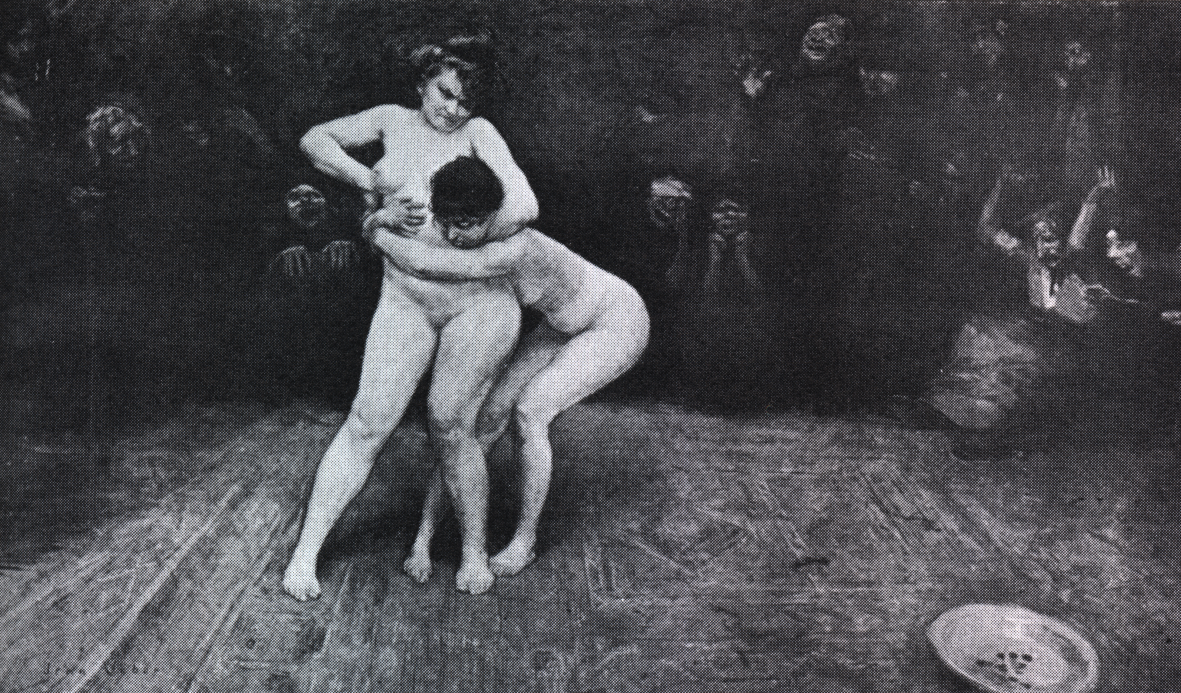 Now one might reasonably wonder why, in a site devoted to erotic mad science, why I would bother writing a scene like the Omega initiation. There’s not that much θαῦμα here, no wonder technology of the sort that Joseph Corwin trades in. You could stage the scene yourself with about twenty dollars’ worth of supplies from your local Walmart, assuming of course that you have a circle of actor friends who are, uh, very serious about the craft.
Now one might reasonably wonder why, in a site devoted to erotic mad science, why I would bother writing a scene like the Omega initiation. There’s not that much θαῦμα here, no wonder technology of the sort that Joseph Corwin trades in. You could stage the scene yourself with about twenty dollars’ worth of supplies from your local Walmart, assuming of course that you have a circle of actor friends who are, uh, very serious about the craft.
But of course, initiations of almost any kind are of great social science interest. It is a puzzle why anyone would willingly subject themselves to something difficult, painful, and possibly publicly humiliating (like getting naked and being beaten up by a girl in front of all your potential fraternity brothers), until you realize that groups like fraternities provide indivisible goods for their members, and are thus vulnerable to free-riding. Would-be members thus need a way of signaling that they will not free-ride. Just saying “I won’t” isn’t good enough, because anyone can say that. But being willing to put up with something costly — such as showing oneself willing to endure pain or ridicule by actually doing so, is a costly signal and therefore a credible one. Fraternity initiations are like this, and therefore can be analyzed using an economic framework similar to that which Laurence Iannaccone uses to analyze the various “strange” behaviors used by members of New Religious Movements (pejoratively, “cults”) — you can hear Professor Iannaccone’s explanation done very lucidly in his EconTalk interview with Russell Roberts.
If you have an understanding of signaling, economics, especially the economics of non-market behavior, will become a much richer and deeper subject. This point is stressed perhaps best of all by Robin Hanson (you can hear an EconTalk interview with Hanson on signaling as well), who makes it a a key theme in his blog Overcoming Bias. Hanson has, in addition to an interest in signaling, a keen interest in speculative technologies. So perhaps there is a mad science angle here, or at least a mad social science angle, and…
Aw heck, who am I trying to fool? The fact is, I had a whole damn third act to write with very little sex until Nanetta and Moira’s shades-of-Tosca dénouement, and since you can only go so far on police-procedural hijinks I had to come up with something, so why not appeal to a long and venerable pornographic tradition?
Now perhaps the something wasn’t the most creative, even if it does provide a rivet for holding different parts of the plot of Apsinthion Protocol together. Naked combat has been picked up and gone a long way in popular culture. We see this, for example, in the one scene that made the movie for me in what was otherwise a pretender to the role of supreme campus hijinks movie:
A K-Y jelly wrestling match. Great idea, guys! And certainly a good plot inspiration for me, although perhaps somewhat disappointingly it results in only one death.
If you want to go more sanguinary in the naked-girl fight thing, check out a scene just about twelve minutes into a 1973 movie called 不良姐御伝 猪の鹿お蝶, Furyō anego den: Inoshika o-Chō (in English, Sex and Fury) in which the heroine, played by Reiko Ike, gets roused out of her bath for a naked swordfight in which she manages to finish off quite a few assailants.



Sublime.
Now I don’t quite know of any popular culture scenes that quite parallel what Laura submits to (or connives at, perhaps?) in the Omega initiation, even if perhaps the thought of it forms the subtext of things like the Old School KY fight. The idea does come up in gay porn. There is a site, called NakedKombat.com, about which Bacchus at ErosBlog wrote about a year ago, where the combaants really are aiming to see who comes out on top, so to speak. Like I wrote, many precedents.



